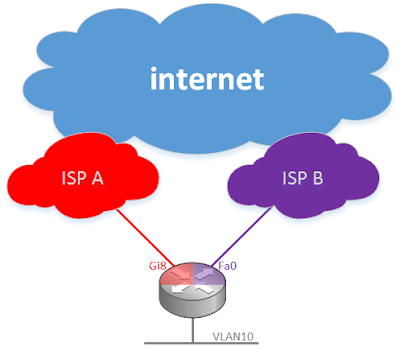Backing up configs with the Ansible NCLU module
With the release of Ansible 2.3 the Cumulus Linux NCLU module is now part of Ansible core. This means when you `apt-get install ansible`, you get the NCLU module pre-installed! This blog post will focus on using the NCLU module to backup and restore configs on Cumulus Linux. To read more about the NCLU module from its creator, Barry Peddycord, click here.
The consulting team uses Ansible very frequently when helping customers fully automate their data centers. A lot of our playbooks use the Ansible template module because it is very efficient and idempotent, and Cumulus Linux has been built with very robust reload capabilities for both networking and Quagga/FRR. This reload capability allows the box to perform a diff on either `etc/network/interfaces` or `etc/quagga/Quagga.conf` so when a flat-file is overridden with the template module, only the “diff” (or difference) is applied. This means if swp1-10 were already working and we added configuration for swp11-20, an ifreload will only add the additional config and be non-disruptive for swp1-10. This reload capability is imperative to data centers and our customers couldn’t live without it.
However, many customers also want to build configs with NCLU (or the net commands) when Continue reading
Worth Reading: The calculus of service availability
The post Worth Reading: The calculus of service availability appeared first on rule 11 reader.
Why Dell EMC’s Chad Sakac No Longer Gets in Bar Fights About HCI and SDS
 Dell EMC’s VxRail HCI appliance is a “half a billion-dollar business.”
Dell EMC’s VxRail HCI appliance is a “half a billion-dollar business.”
AT&T to Stream DirecTV Now on 5G as Part of Latest Trials
 The trials include vRAN and virtualized core components from Ericsson and Samsung.
The trials include vRAN and virtualized core components from Ericsson and Samsung.
Introducing VMware Skyline™
VMware Skyline™: an innovative support technology, developed entirely by VMware Engineering, that provides VMware technical support engineers with extreme visibility into your (customer’s) environment.
Customers with active support subscriptions install the VMware Skyline Collector, a standalone appliance that automatically and securely collects product usage data such as configuration, feature, and performance data.

It then listens for changes, events and patterns and analyzes the information using a robust rules and machine learning engine. The rules engine is where an ever-growing library of support intelligence, product knowledge, and logic is stored to analyze inbound streams of product information. Check out the video and the blog to learn more!
The post Introducing VMware Skyline™ appeared first on Network Virtualization.
Adtran Launches Open Network Alliance for Software-Defined Access
 Adtran likens the alliance to Apple's app store ecosystem.
Adtran likens the alliance to Apple's app store ecosystem.
Datanauts 099: Understanding Microservices
Microservices represent the new application architecture, but is it right for everyone? And what do microservices mean for infrastructure design? The Datanauts explore microservices with guest Bryan Boreham of Weaveworks. The post Datanauts 099: Understanding Microservices appeared first on Packet Pushers.Small Site Multihoming with DHCP and Direct Internet Access
Cisco recently (15.6.3M2 ) resolved CSCve61996, which makes it possible to fail internet access back and forth between two DHCP-managed interfaces in two different front-door VRFs attached to consumer-grade internet service.Prior to the IOS fix there was a lot of weirdness with route configuration on DHCP interfaces assigned to VRFs.
I'm using a C891F-K9 for this example. The WAN interfaces are Gi0 and Fa8. They're in F-VRF's named ISP_A and ISP_B respectively:
First, create the F-VRFs and configure the interfaces:
ip vrf ISP_A
ip vrf ISP_B
interface GigabitEthernet8
ip vrf forwarding ISP_A
ip dhcp client default-router distance 10
ip address dhcp
interface FastEthernet0
ip vrf forwarding ISP_B
ip dhcp client default-router distance 20
ip address dhcp
The distance commands above assign the AD of the DHCP-assigned default route. Without these directives the distance would be 254 in each VRF. They're modified here because we'll be using the distance to select the preferred internet path when both ISPs are available.
Next, let's keep track of whether or not the internet is working via each provider. In this case I'm pinging 8.8.8.8 via both paths, but this health check can be whatever makes sense for your situation. So, Continue reading
Startups have Screwed Up Work Culture
Dan Lyons talks about the dysfunctional side of working at a startup.
The post Startups have Screwed Up Work Culture appeared first on EtherealMind.
Worth Reading: IoT needs a paradigm shift
The post Worth Reading: IoT needs a paradigm shift appeared first on rule 11 reader.
History Of Networking – Juliusz Chroboczek – Babel Routing Protocol
Babel is a relatively new routing protocol when compared to some of the more well established options, but due to some of its design considerations, it is very well suited for routing on distributed mesh networks. Babel’s creator, Juliusz Chroboczek, joins the Network Collective team in discussing how Babel came about, some of the design decisions when creating it, and what the future looks like for this emerging technology.
Outro Music:
Danger Storm Kevin MacLeod (incompetech.com)
Licensed under Creative Commons: By Attribution 3.0 License
http://creativecommons.org/licenses/by/3.0/
The post History Of Networking – Juliusz Chroboczek – Babel Routing Protocol appeared first on Network Collective.
History Of Networking – Juliusz Chroboczek – Babel Routing Protocol
Babel is a relatively new routing protocol when compared to some of the more well established options, but due to some of its design considerations, it is very well suited for routing on distributed mesh networks. Babel’s creator, Juliusz Chroboczek, joins the Network Collective team in discussing how Babel came about, some of the design decisions when creating it, and what the future looks like for this emerging technology.
Outro Music:
Danger Storm Kevin MacLeod (incompetech.com)
Licensed under Creative Commons: By Attribution 3.0 License
http://creativecommons.org/licenses/by/3.0/
The post History Of Networking – Juliusz Chroboczek – Babel Routing Protocol appeared first on Network Collective.
